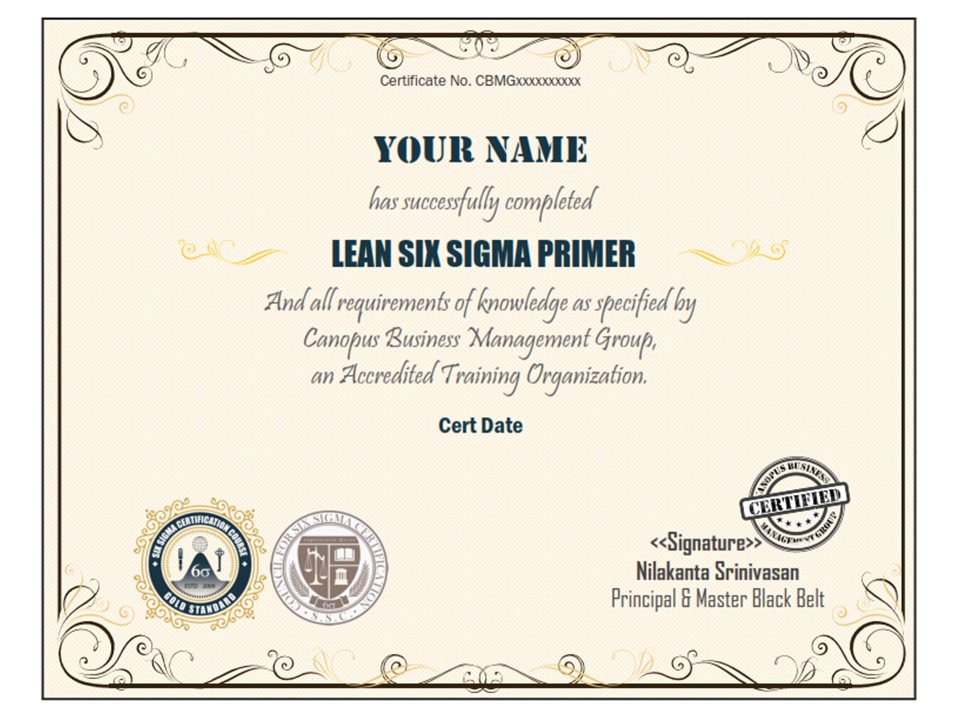Is there a difference between Six Sigma and Lean Six Sigma?
Lean and Six Sigma are close cousins in the process improvement world and they have lot of commonalities. Now we will talk about the difference between Six Sigma and Lean Six Sigma.
Six Sigma uses a data centric analytical approach to problem solving and process improvements. That means, there would be time and effort in data collection and analysis. While this sounds very logical to any problem solving approach, there can be practical challenges.
For example, some times we may need data and analysis to be even prove the obvious. That is lame.
On the other hand, Lean Six Sigma brings in some of the principles of Lean. Lean is largely a pragmatic and prescriptive approach. Which implies that we will look at data and practically validate that problem and move on to prescriptive solutions.
Thus combining Lean with Six Sigma, helps in reducing the time and effort needed to analyze or improve a situation. Lean will bring in a set of solutions that are tried and tested for a situation. For example, if you have high inventory, that Lean would suggest you to implement Kanban.
Lean is appealing because most often it simplifies the situation and that may not be always true with Six Sigma. However the flip side to Lean is that if the system have been improved several times and reached a certain level of performance and consistency, Lean can bring out any further improvement unless we approach the problem with Six Sigma lens, using extensive data collection and analysis.
Looking at the body of knowledge of Six Sigma and Lean Six Sigma, you will find that Lean Six Sigma courses following tools:
- Cost of Poor Quality
- Lean Principles
- Definition, Origin, Principles & Goals of Lean
- Value, Value Stream, Concept of Muda(Waste) & Categories of Waste
- 7 Types of Wastes, How to Identify them, & Waste Identification Template
- Value Stream Mapping (VSM), Symbols, Benefits & Procedure
- Push System, Pull System, Single Piece Flow, 5S, Kaizen, SMED, Poka-Yoke
- Types of Poka-Yoke – Shut Down, Prevention, Warning, Instructions
- Heijunka & Visual Control
Is Lean Six Sigma still relevant?
In the age of AI and ML, where everything is getting automated, why would any one need an approach will can improve the process. Yes, mostly processes are set to become automated and that means they are already optimized. Will there at all be a need or scope to improve them any further?
Lets now look at how digital transformation is going and its adoption across sectors:
- Internal acceptance and adoption is slow for digital transformation technologies and expected ROI remains an aspiration
- People have come to realize that Digital Transformation is a journey and not a ‘fix it and forget it’ model.
- Digital Transformation is a continuum of iterative improvements leading to big transformation and so even when it is digital change, they have to move step by step
- People are not going to go away and hence success of such transformation will reside largely on how people behavior change is addressed and technology change will take care of itself
- Every employee will have to have a keen eye for improvement and find ways to transform the business.
- The only differentiation between competition and you, is how you will react to a situation, because your competition would have the same technology advantage as you. That means, change is constant and your employees have to look for newer ways of doing things and technology is just an enabler
Lean Six Sigma is a way to challenge status quo, a way to solving problems and make improvements.
With AI and ML, neither will the need to challenge status quo or solve a problem or make improvements go away. In fact they will become even more challenging. That would mean, the need for Lean Six Sigma tools and techniques will be all the more important.
No Digital transformation commences without a good As-is analysis. The tools and techniques used for performing this are tools used in Lean and Six Sigma. Similarly, identifying how much improvement can be brought about requires going to the root of the problem. Technology solutions that are superficial will only add to the complexity and not simplify the business.
Thus even skills needed for Digital Transformation are part of Lean Six Sigma body of knowledge.
To be very specific, Lean Six Sigma Certifications will definitely be an added advantage in days to come which are dominated by AI, ML and Digital transformation.
If you are beginner to Lean Six Sigma and have very less idea about what is Lean Six Sigma and should you go for it or not, then instead of asking others, here’s a best way.
Lean Six Sigma Primer is a 2 hours online course that will give you very good understanding on the following:
- What is Lean Six Sigma?
- How is it relevant to my career?
- What is the history and future for Six Sigma?
- What are the various belt titles? And which should I go for?
- What are certifications and who are the accredited certification bodies?
- Can you share me a full case study of six sigma?
- What is Design for Six Sigma?
This course has over 25,000 students across 150 countries. At the end of the course, if you complete a knowledge test, you will also get Free Six Sigma Certification.
Sign-up for collaborat newsletter

